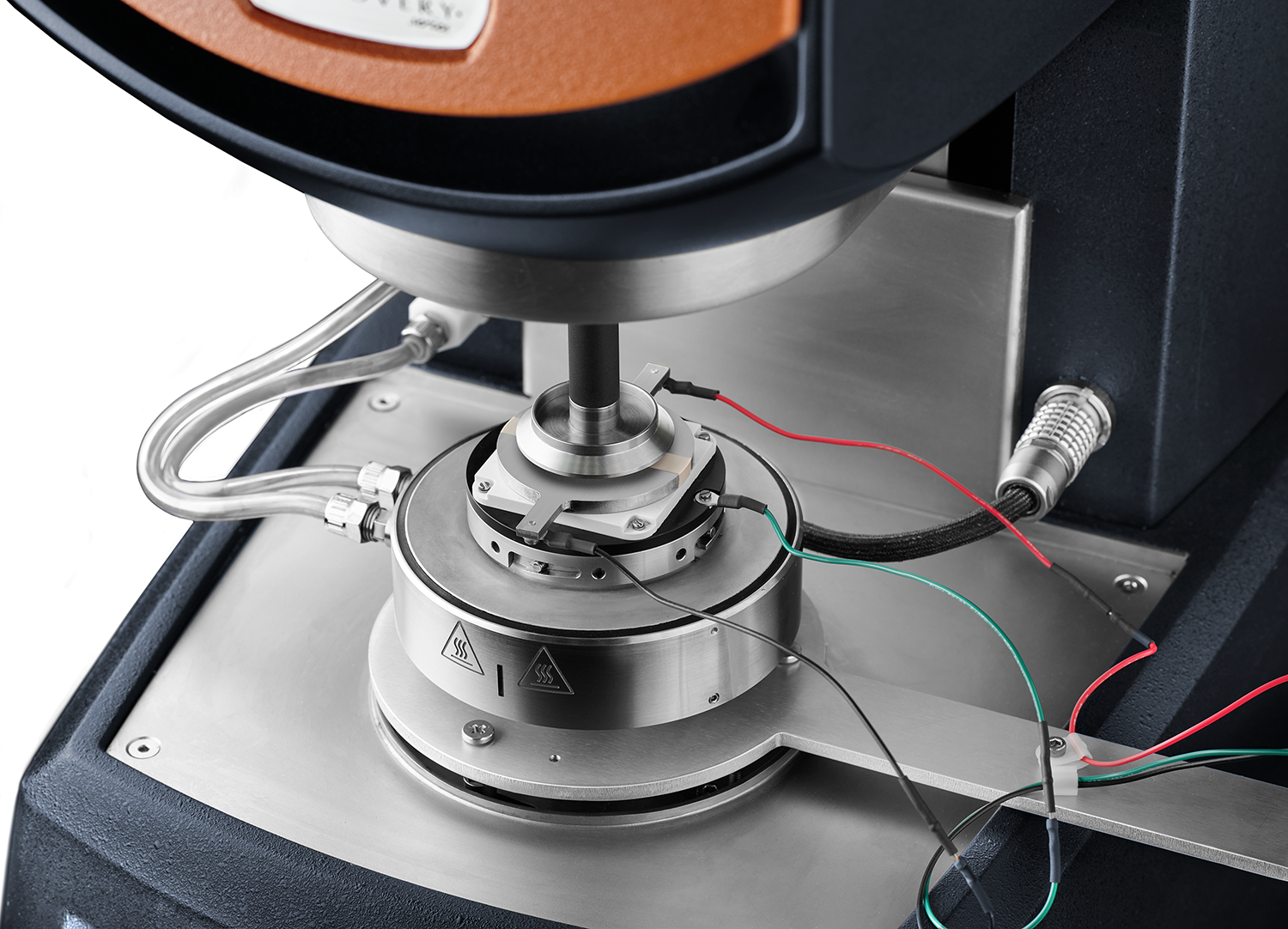Evaluación de lodos de batería con mediciones reológica y de impedancia simultáneas
Morgan Ulrich | Hang Lau | Sarah Cotts
18 de marzo de 2024
Las baterías de iones de litio (BIL) se fabrican mediante un proceso de varios pasos que combina varios materiales activos e inactivos. La selección y las condiciones de procesamiento de materiales pueden afectar en gran medida el desempeño final de la batería. En particular, los electrodos son uno de los componentes de mayor importancia que influyen en el desempeño de la batería. La calidad del electrodo contribuye directamente a la densidad de energía y al desempeño electroquímico, generales, de la batería.
La fabricación de electrodos es muy compleja e involucra mezclar materiales activos, aglutinante y aditivos conductores en una capa de lodo sobre el colector metálico. A continuación el electrodo se seca y se calandra (compacta). Durante la fabricación de electrodos, las formulaciones de lodo deben ser estables durante el almacenamiento, dispersarse fácilmente y ser fluibles para producir un recubrimiento uniforme. La caracterización de lodos para la formulación y procesamiento óptimos es un paso crucial para mejorar el desempeño de toda la batería.
La reología, el estudio del flujo y la deformación de materiales bajo tensión, desempeña un papel crucial en el desarrollo y la optimización de los lodos de electrodos. Como se abordó en un blog previo, la reología de lodo de electrodo de batería implica medir la viscosidad, el comportamiento tixotrópico y el límite elástico, tres propiedades cruciales para asegurar el recubrimiento y la estabilidad adecuados.

Another important element of electrode performance is electrical conductivity. Lithium-ion battery cathodes typically include conductive additives such as carbon black particles to compensate for the poor conductivity of the active materials. The carbon black particles agglomerate around the active particles to form a percolation network to conduct electrons to the current collector. The conductive network structure is highly important to the final electrode performance, but shear-induced changes during coating can disrupt the electrically conductive network.
Impedance spectroscopy provides insight on the conductive material dispersion in the slurry but does not account for shear-induced changes from the coating process. Simultaneous rheology and electrochemical impedance spectroscopy directly measure shear-induced changes in the microstructure, replicating slurry coating conditions and enabling measurements of time-dependent recovery after shear. This measurement confirms that the electrically conductive network is maintained in the finished electrode, predicting successful electrode performance prior to full battery assembly.
The new Discovery Hybrid Rheometer Rheo-Impedance Spectroscopy accessory achieves unmatched data quality in both dielectric impedance and rheology measurements. The novel design eliminates the need for electrical contact with the upper tool, which limits the measurement range, and instead positions both electrodes on a lower plate with the insulated upper parallel plate geometry as a conductor. The Rheo-Impedance accessory enables testing across the full range of the DHR’s torque sensitivity, enabling precise characterization of viscosity, yield stress, viscoelasticity, and structure recovery.
Learn more about unlocking complete rheological and impedance measurements of your slurry with the new DHR Rheo-Impedance accessory. For personalized solutions and battery testing guidance, contact TA Instruments experts.
Otros recursos
- Application Note – Characterization of LIB Cathode Slurries Using Simultaneous Measurements of Rheology and Impedance Spectroscopy
- Application Note – Rheological Evaluation of Battery Slurries with Different Graphite Particle Size and Shape
- Application Note – Time Dependent Stability of Aqueous Based Anode Slurries with Bio-Derived Binder by Rheological Methods
- Application Note – Rheological and Thermogravimetric Characterization on Battery Electrode Slurry to Optimize Manufacturing Process
- eBook – https://www.tainstruments.com/essential-battery-slurry-characterization-techniques/







